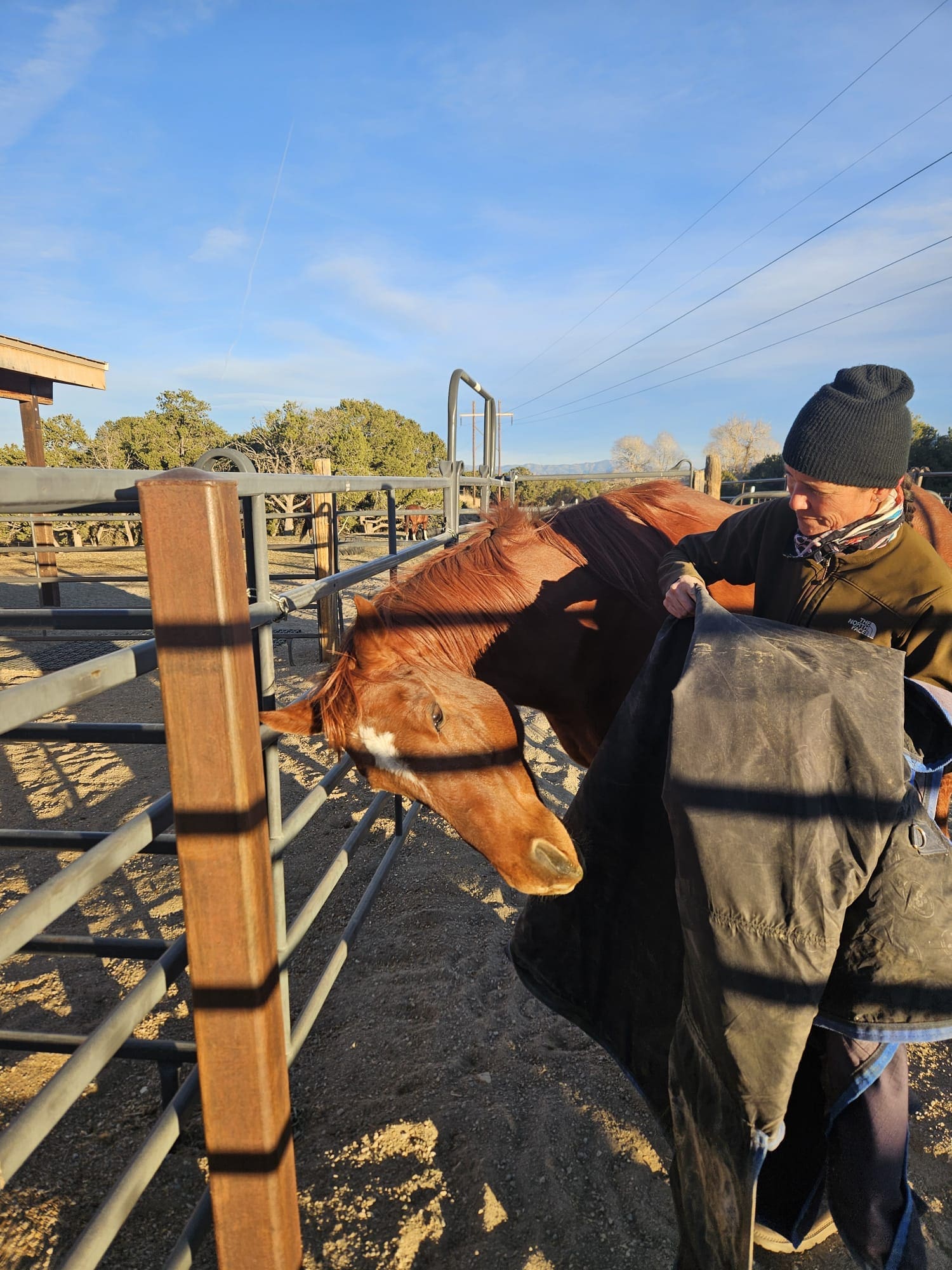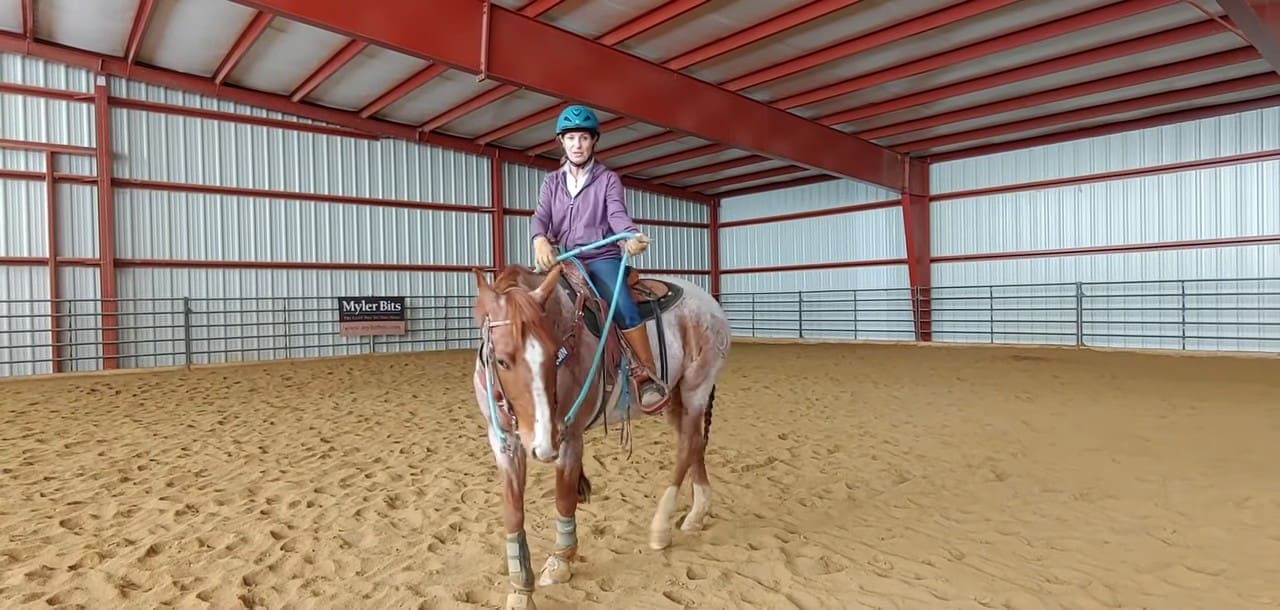
I grew up in central Florida, riding year-round in the steamy heat. As a young girl, most of my summer riding was done bareback, barefooted, in a bathing suit (much to my mother’s chagrin). As a teenager, I spent summers training hard for jumping competitions, often wearing a black velvet hard hat, tall boots and chaps. Living in a climate like that and riding horses, you learn a lot about surviving the heat.
For three decades now, I’ve lived in the high mountains of Colorado, where we lose more days of riding each year due to cold rather than heat. The harsh, high-altitude, desert-like conditions that I live in now bring their own environmental challenges. Horses are highly adaptable to the climate they live in, but good horse management practices will keep horses safer, more comfortable, and more capable at their jobs.
In some places, it’s too hot to ride in the summer, and the primary riding season is winter. But for many riders, summertime offers the best riding opportunities—like trail riding, camping, horsemanship clinics and competitions. We dream, scheme, and plan through the winter months about the riding we will do come summer. If you’re active with your horses in the summer, chances are good that you will run into overwhelming heat at times.
To navigate hot weather riding, you need to know when it’s too hot to ride or too hot to transport your horse, and how you will monitor your horse for signs that he’s not coping well with the heat. There are many things you can do to manage your horse better in the heat, and keep him safe and comfortable when the mercury rises.
Too Hot to Ride
Every region has its own environmental challenges to consider, but the most challenging conditions for horse sports are the combination of high heat and high humidity. Here in the high mountain desert of Colorado, we often have days with less than 10% humidity. Even when it’s blazing hot outside, it remains comfortable in the shade, and sometimes it feels cooler than the actual air temperature due to the low humidity. But when you add high humidity to the equation, conditions can get dangerous—fast.
High humidity affects the horse more than the hot air temperature because it interferes with the body’s ability to cool itself down by sweating. If there is so much humidity in the air that the sweat does not evaporate, the body loses its ability to cool itself. The heat index is a measure that combines the effects of heat and humidity to tell you how hot it feels (also known as the apparent temperature).
According to the National Weather Service, when the heat index reaches 103°F, conditions become dangerous for both you and your horse. A summer day with an air temp of 88°F plus humidity of 75%, means the heat index is 103°F, and you and your horse are at risk of heat exhaustion. A temperature of 92°F plus 85% humidity gives a heat index of 126° and puts you and your horse in extreme danger of heat stroke.
Since the heat index chart tells us how hot it feels in the shade, if you are out in the sun it’s far worse, so you must factor that in too. A black or dark colored horse in the sun will struggle even more than a gray or light-colored horse. If the horse is already covered in sweat before you saddle, it could be a warning sign that the heat index may be too high to ride.
The heat index chart is derived from a complicated formula, but even without the chart, you can make simple calculations by adding the heat and humidity. When the sum of both is more than 150 (e.g., 80°F with 70% humidity), your horse is at risk of heat stroke, and you should take precautions.
Too Hot to Box
Even when it’s cool outside, horses can get easily overheated in a horse trailer (often called a “box” in other countries). When you add excessively high air temperatures outside the metal box, the body heat coming off multiple horses inside the box, and the excessively high heat coming off the asphalt road in the middle of a hot day, the horse trailer can quickly become an oven.
When transporting horses in the summer heat, we often travel at night or early in the morning to avoid the hottest part of the day. If it’s a fully enclosed trailer, we make sure the overhead vents and all windows are open, to ensure good air flow. With our seasoned travelers, we avoid leg wraps or shipping boots in the hot weather to help keep the horses cooler.
Since many horses won’t drink as much on the road, dehydration is always a concern when traveling with horses. Add to that the heat of the trailer on a hot summer day, and that road trip can be quite hard on the horses. We make sure to offer horses a clean, cool bucket of fresh water every time we stop and monitor the intake on each horse.
Look for Warning Signs
When exercising in extreme heat, both you and your horse are at risk of heat exhaustion, muscle cramping, anhidrosis (non-sweating) or even the life-threatening condition of heat stroke (when internal overheating occurs, and blood flow shuts down). The best thing to do is avoid riding in conditions that present a risk to your horse, but it’s also important to know what signs to look for and how to deal with an overheated horse.
First, be alert for excessive sweating—a horse completely wet from head to tail with sweat pouring from his body is a sign that the horse’s body is losing its ability to cool itself. You may start to see lethargy, stumbling or a lack of response from your horse.
Rapid breathing (almost panting), fully dilated nostrils and a rapid pulse are signs that the horse is struggling, and your intervention is needed. As the horse loses its ability to cool itself through sweat, its internal temperature begins to rise, and the horse is at risk of heat stroke.
Anhidrosis, or a failure to sweat, is a serious, but poorly understood condition in horses that can lead to heat stroke fast. It is most often seen in horses in hot, humid climates like Florida, and it seems like some horses are more prone to it than others. Be watchful for horses that are dry when exercising in the heat—they may be more lethargic and breathing hard. When a horse fails to sweat, we must take immediate and aggressive external measures to cool him down before his internal temperature rises too high.
Cooling Down a Hot Horse
There’s nothing complicated about cooling a hot horse. Get him in the shade, stop exercise, hose or sponge him down with cool water. In extreme conditions, or for horses with anhidrosis, ice packs or cool packs can be placed on his neck and jugular veins (specialty cooling garments are also made for horses). Running cool water from a hose over the large veins on the insides of the legs will help a lot. Misting fans, shade and air circulation will also help keep horses cool.
Make sure the hot horse has access to drinking water. There was a time when it was believed that you should not let a hot horse drink too much. That crazy idea flew right out the window after the 1996 Olympics in Atlanta, where they researched cooling off hot horses and found that the faster you cool them off, the better. Sure, if it appears a horse is bolting down very cold water, you might want to slow him down a little, but it’s not a good idea to restrict his intake.
Proper hydration is critical to a horse’s health, and salt and electrolytes can play a big role in hydration. My horses always have access to a salt lick, even when we are traveling. If a horse will not consume the salt, we may consider top dressing loose salt in their grain. If I think a horse would benefit from electrolytes, I give them in a separate water bucket, along with a bucket of plain water so that the horse always has a choice. He will consume the electrolytes if he needs them (no need to force feed), and I don’t want to restrict his access to water.
At the End of a Hot Day
The bottom line is that a well-trained horse will do whatever you ask of him, even if it’s dangerous to his health and well-being. The fact of the matter is that it’s the rider’s responsibility to keep the horse safe, to monitor the weather conditions and make appropriate decisions about when it’s too hot to ride. It’s the rider’s job to watch for warning signs that the horse is not coping well with the heat and to take immediate action to bring him relief.
Even though our horses are always willing to give, it doesn’t mean we should always be willing to take. Sometimes that means we must change the plan or wait for a better day to ride. If you’re armed with the facts about how your horse copes with the heat, it will help you make responsible decisions to protect your horse.
Now get out there and enjoy the summer riding!



